Rays belong to the superorder Batoidea, a group of cartilaginous fishes commonly known as rays or mantas. They are characterized by their large size, flattened bodies, and expansive pectoral fins. The central part of their body is known as the disc. These majestic swimmers inhabit coastal and deep ocean waters. While most rays are marine, some species live in freshwater environments. This article focuses on seven notable marine ray species, highlighting their main features.
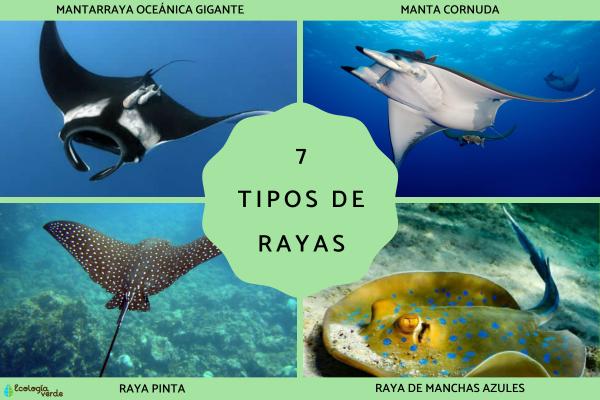
Giant Oceanic Manta Ray
Reef Manta Ray
Spinetail Devilray
Common Stingray
Spotted Eagle Ray
Blue-spotted Stingray
Bull Ray
The Giant Oceanic Manta Ray is widely distributed in tropical and subtropical seas and is the largest species among manta rays, reaching lengths up to 9 meters and weighing as much as 2,400 kilograms. It has a broad, flattened shape and distinctive cephalic lobes (“horns”) on its head that help funnel plankton into its mouth for filter feeding. Unlike other rays, its tail’s venomous spine is non-functional. Remarkably, the giant manta has the largest brain of any known fish, comparable in size to that of primates. Each manta ray possesses a unique pigmentation pattern useful for individual identification.
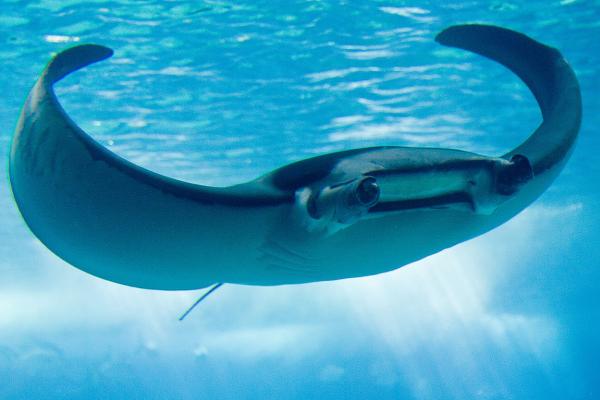
The Reef Manta Ray is the second largest manta species, found extensively in the Pacific and Indian Oceans in tropical and subtropical regions. It typically inhabits shallower, coastal waters compared to the giant manta. Coloration patterns help distinguish these two species. Its natural predators include large sharks such as hammerheads (Sphyrna mokarran) and bull sharks (Carcharhinus leucas), as well as some dolphin family members like orcas (Orcinus orca).
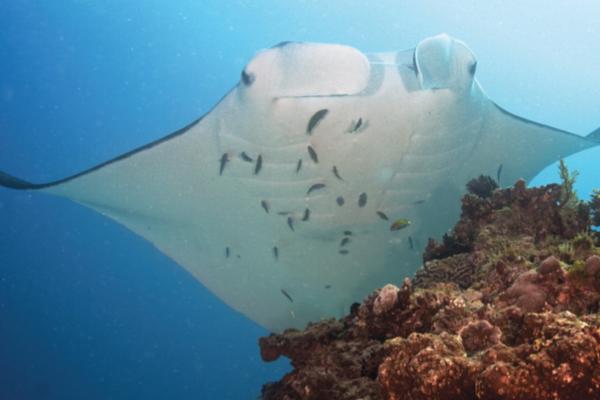
Known as the Chilean devilray, this species inhabits warm open seas, diving to great depths, and also lives near coasts and islands. It can reach lengths up to 4 meters and weigh about 350 kilograms. Its diet mainly consists of small fish and plankton. Due to low reproductive rates (2–3 offspring per year), it is considered vulnerable.
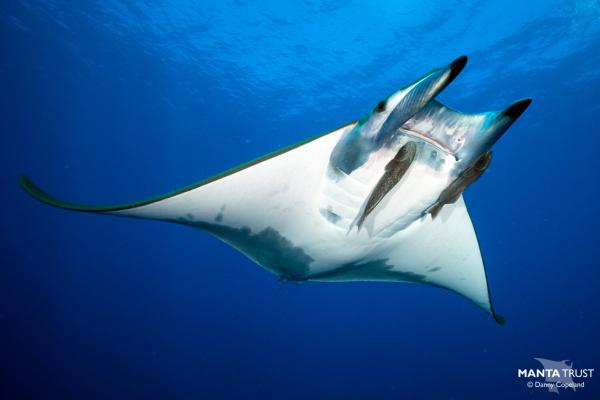
Distributed in the Mediterranean Sea, Black Sea, and eastern Atlantic Ocean, the Common Stingray dwells over sandy and muddy seabeds. It measures up to 2 meters and has tubercles and protective shields on its disc. Its whip-like tail features venomous spines used for defense, capable of causing severe pain if stepped on accidentally.
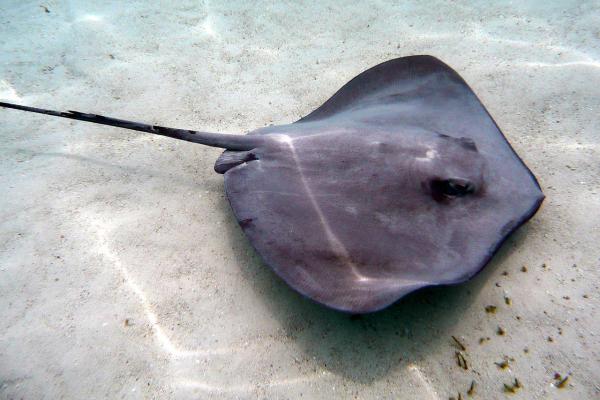
Recognized by its dark back covered with white circular spots, the Spotted Eagle Ray has a short rounded snout, small dorsal fin, no tail fin, and a spiny tail. It is mostly found near coral reefs. Studies suggest this species may belong to a complex of species due to morphological differences.
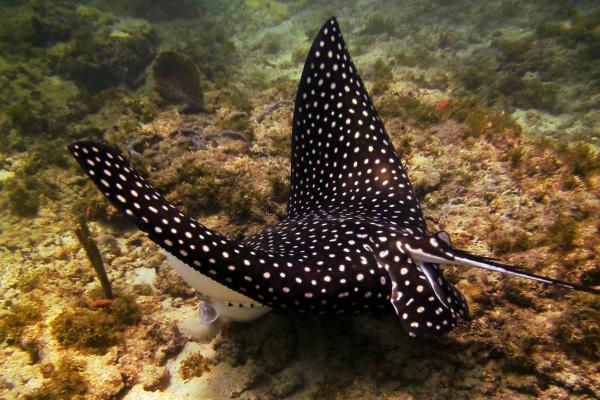
This ray stands out with its greenish-gray body adorned with scattered blue spots. It inhabits coral reef sandy areas in the Indian and Pacific Oceans. Unlike many rays, it rarely buries itself in the sand, preferring caves or coral formations for shelter. It feeds by digging holes in the substrate to capture prey with its body and brings it to its mouth. Its tail spine is venomous.
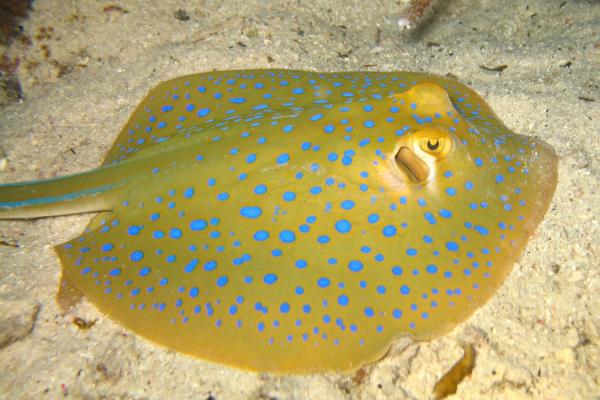
The Bull Ray can grow over 2 meters long and is distributed in the eastern Atlantic Ocean, favoring temperate to tropical coastal waters. It is identifiable by its brown back marked with numerous darker lines and pointed snout. Bull Rays live solitarily or in small groups and feed on benthic mollusks and crustaceans. Populations in the Mediterranean and Black Seas are declining due to overfishing and bycatch.

If you want to learn more about different types of rays and other wild animals, please visit our [Wildlife Category].
Bibliography
Bonfil, R. Technical justification for the inclusion of the Chilean devil ray (Mobula tarapacana) in the Threatened (A) risk category according to the Method for Assessing the Risk of Extinction of Wild Species in Mexico.
De Jesús Gómez-García, M., & Godínez-Siordia, D. E. (2013). Biological and ecological aspects of the giant manta ray Manta birostris (Walbaum, 1792).
"Immerse yourself in the fascinating world of rays." Available at: https://www.fishipedia.es/pez/type/raie
Milessi, Andrés C., & Oddone, M. C. (2003). "A new record of Manta birostris (Donndorff 1798) (Batoidea: Mobulidae) in the Rio de la Plata, Uruguay."
animal tags: Rays
We created this article in conjunction with AI technology, then made sure it was fact-checked and edited by a Animals Top editor.